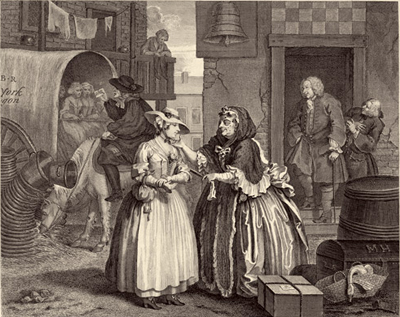One evening towards the end of May 1732, William Hogarth went out to celebrate the enormous popular success of A Harlot's Progress. Hogarth's engravings, graphically telling the tale of a whore's decline, from pox to poorhouse to early death, had sold far beyond his expectations and he suddenly found himself a rich and famous man. What began as a drink with four friends in Covent Garden turned into an impromptu five- day excursion down the Thames.
The trip became a boozy, low-life parody of the Georgian milord's Grand Tour, taking in the taverns of Gravesend and Rochester instead of the art galleries of Florence and Rome. The friends engaged in a variety of rowdy activities, and it was noted that Hogarth showed particular skill (appropriate to a satirist) in the art of flinging dung.
Hogarth's unruliness remains his most endearing characteristic, partly because it was unruliness of such an innocent kind - a childless man, he remained something of a child himself long into adulthood - and partly because it suggests a secret sympathy between the satirist and his targets. The idea that Hogarth regarded erring humanity with a kind of complicit benevolence lies behind a popular but sentimental view of his satirical art - namely, the belief that his moralising savagery masked more humane instincts, above all a desire to celebrate life in all its rich diversity. There may be a grain of truth in this but to see Hogarth's art as essentially life-affirming softens him too much.
The titles of Hogarth's best-known works, the Rake's and Harlot's "Progresses" were borrowed from John Bunyan's Nonconformist Christian allegory The Pilgrim's Progress. But where, in Bunyan, the pilgrimage leads upwards to God, Hogarth's characters only ever proceed down, towards the pit and damnation. Duped by inappropriate ambitions, deluded...

The name of progress
03-03-1997

